The Coandă effect is an aerodynamic phenomenon, that affects several aircraft and helicopter designs – perhaps more than some people realize.
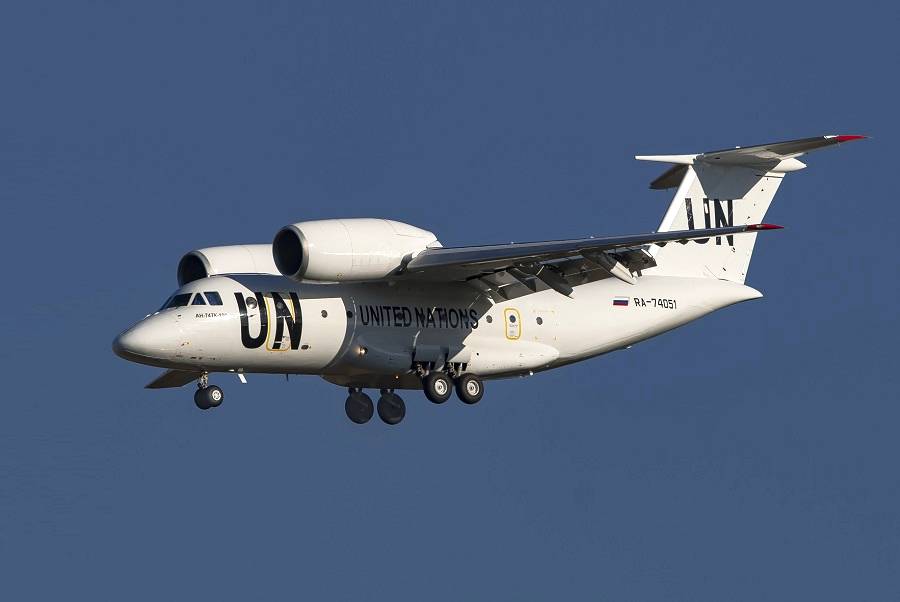
The first time this author ever heard of this phenomenon was a bit over ten years ago. And it didn’t have anything to do with aviation. Rather, it was a feature in then-new Formula 1 cars, and it was a long story in itself. In short, it had to do with redirecting the gases from the engine’s exhaust pipes. This “energized” various aerodynamic parts, ultimately increasing the car’s downforce. It was quite tricky to use, requiring engines to produce substantial exhaust gases, even when idling!
Simplistically speaking, “downforce” is the vertical opposite of aerodynamic lift for aircraft. And that’s where the Coandă effect proves more useful. Henri Coandă, who gives this phenomenon its name, was not the first person to recognize or describe it. His work on it took place in the 1930s. But the first descriptions of it appeared over a hundred years earlier, in Britain’s Royal Society and elsewhere.
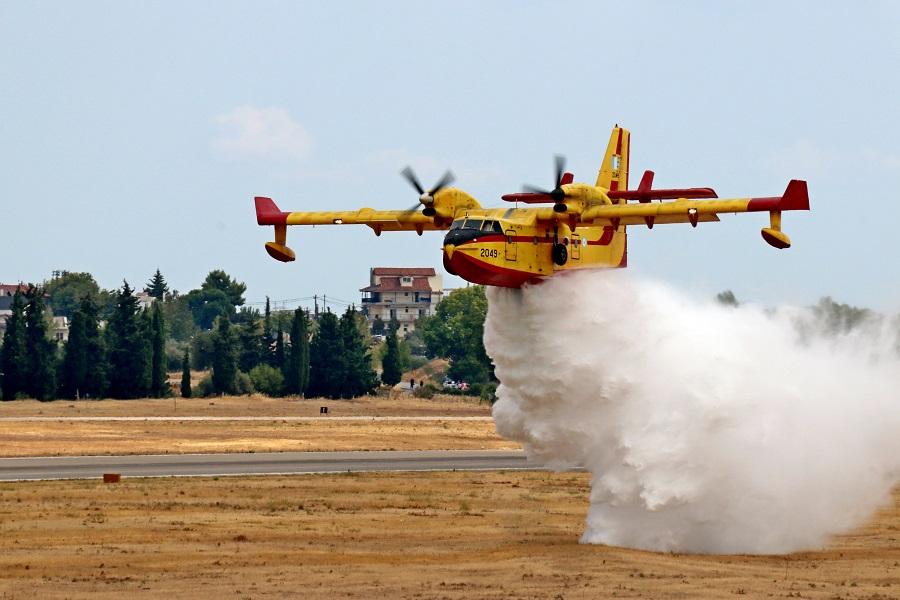
The Coandă Effect In Aircraft
But Coandă was the first to recognize that this effect could benefit aviation. The effect has to do with the way a fluid jet (air or liquid) interacts with a nearby surface when it travels across it. If this surface curves away from the fluid jet, the fluid has the tendency to remain attached to this surface. So the fluid will curve the airflow’s path, “pulling” it along, as a result. This is because of the differences in pressure between the moving jet of fluid and the slower fluid (air) around it.
All this means that engineers can use the Coandă effect to improve airflow over an aircraft’s wing. The airflow from the propellers of an aircraft can contribute to this effect. That’s if most of the airflow goes above the wing. But this isn’t necessarily the case for all turboprops or piston-engined twins today.
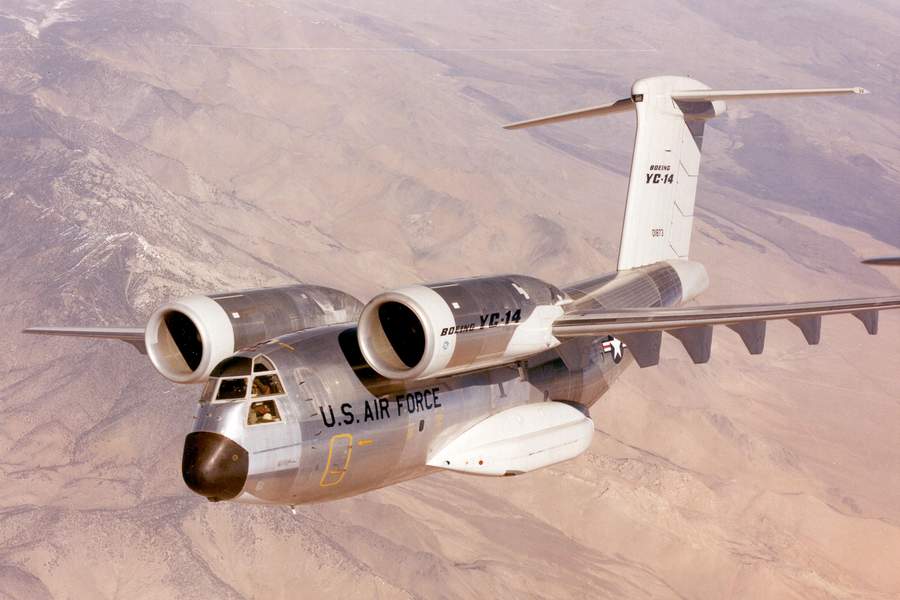
For jets, a way to take advantage of the Coandă effect is by placing the engines over and forward of the wing. For example, the Antonov An-72 and An-74 use this design. Test aircraft like the Boeing YC-14 (above) also used the same principle. The Antonov and Boeing designs all appeared in the 1970s. Aircraft designers had thought of using the effect much earlier. However, they had to wait.
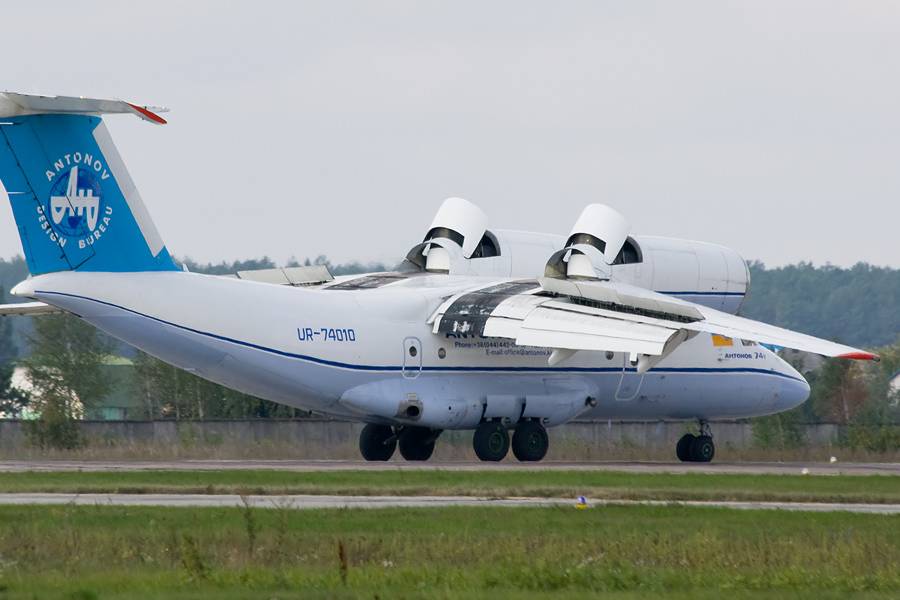
Turbojets And Turbofans
One reason for the wait was that the gasses from early turbojet and low-bypass turbofan engines were too hot. So, making wing components that can interact with them, without worries about wear and/or damage, was tricky. Also, the volume of air that these engines throw rearward is smaller. Turbofans are bigger and envelop the core (that burns fuel and air) with air that the fan simply propels rearward. So their gases are cooler and have more volume, making them a better fit for the Coandă effect.
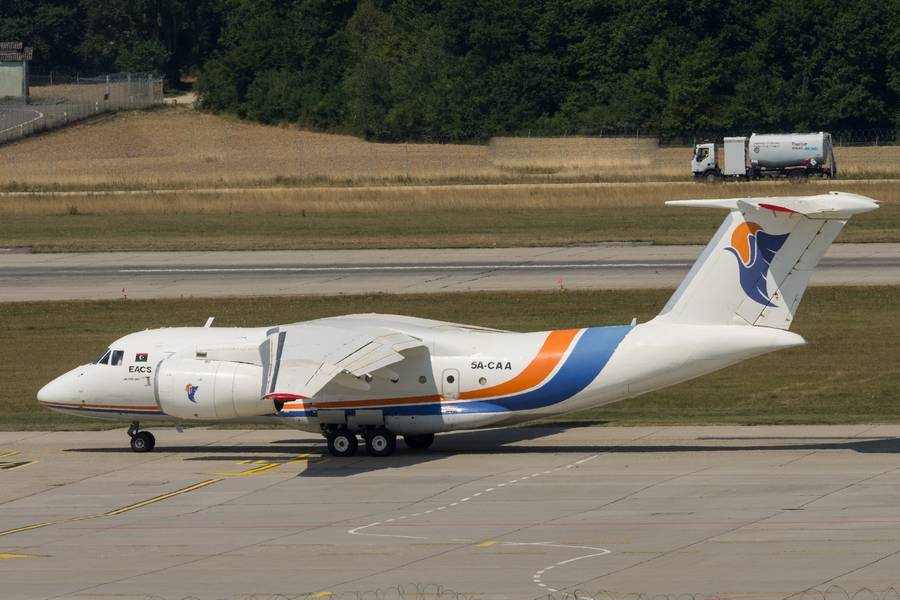
But this setup, with the engines over the wing, has some disadvantages, relating to the design’s overall efficiency. This is why we don’t see them on more aircraft. However, the design works when high lift and very slow take-off and landing speeds are paramount. So the An-72 and An-74 fulfil STOL (Short Take-Off and Landing) roles, using the Coandă effect. But a later version of the An-74 (above) has conventional underwing engines and pylons, for lower trip costs.
However, aircraft don’t actually need to have their engines over the wing, to use this principle. Aircraft designers can take advantage of the Coandă effect in different ways, with the engines under the wings. Another change that came with high by-pass turbofan engines, is that engineers didn’t need to worry as much about the interaction between jet engine nozzles and flaps.
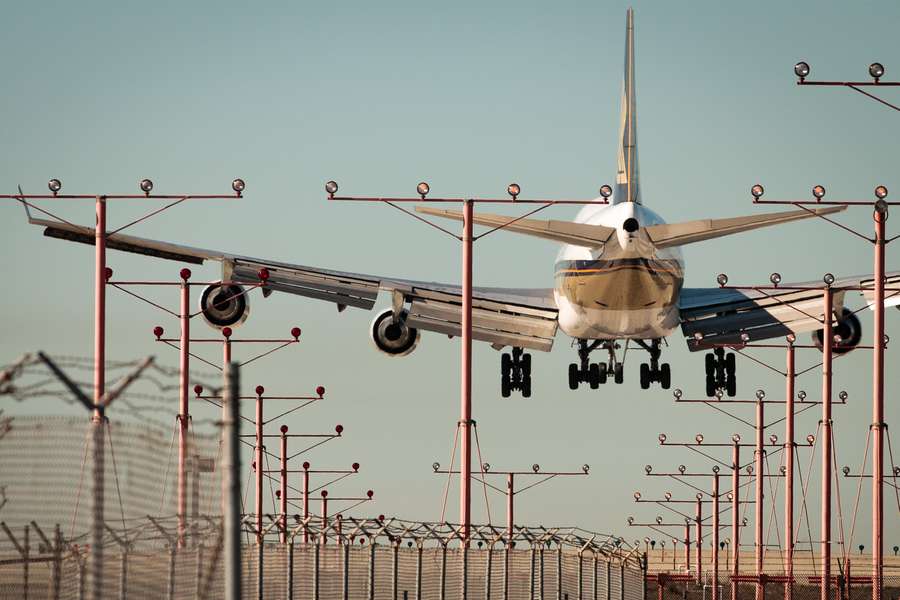
Flaps And The Coandă Effect
Earlier jet designs (including the 707 or 747) have a gap between the flaps, immediately behind each engine. Newer aircraft usually don’t have this. One way of using the Coandă effect is to direct some engine gases through the slots of multi-slotted flaps. This allows the airflow to attach ABOVE the flap surface. And this helps keep the airflow on the upper side of the wing attached longer, at lower speeds. However, not all aircraft with flaps behind the engines necessarily use the Coandă effect.
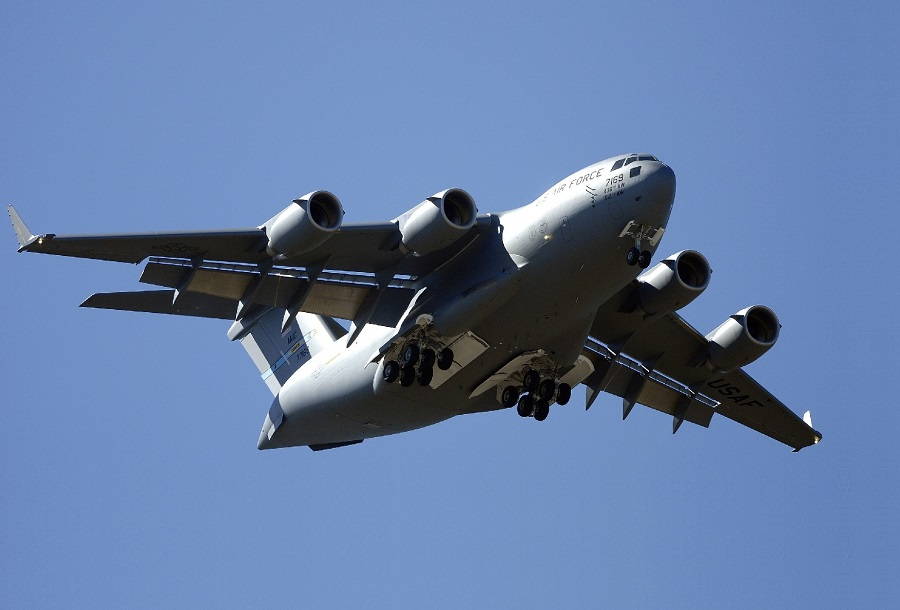
But some certainly do. That unsuccessful Boeing YC-14 (with overwing engines) eventually lost to the McDonnell Douglas YC-15. This aircraft had four underwing engines, and used “externally-blown flaps”, as described above. After more changes, the YC-15 eventually led to the McDonnell Douglas (now Boeing) C-17.
The Coandă effect also features in other ways, that don’t involve direct airflow from the engine exhaust. In other designs, bleed air from the engines makes its way to the wing’s upper surface through special nozzles, that energize the wing and keep the airflow attached to it. An early application of this principle is the Japanese Shin Meiwa US-1A, an amphibian sea rescue aircraft.
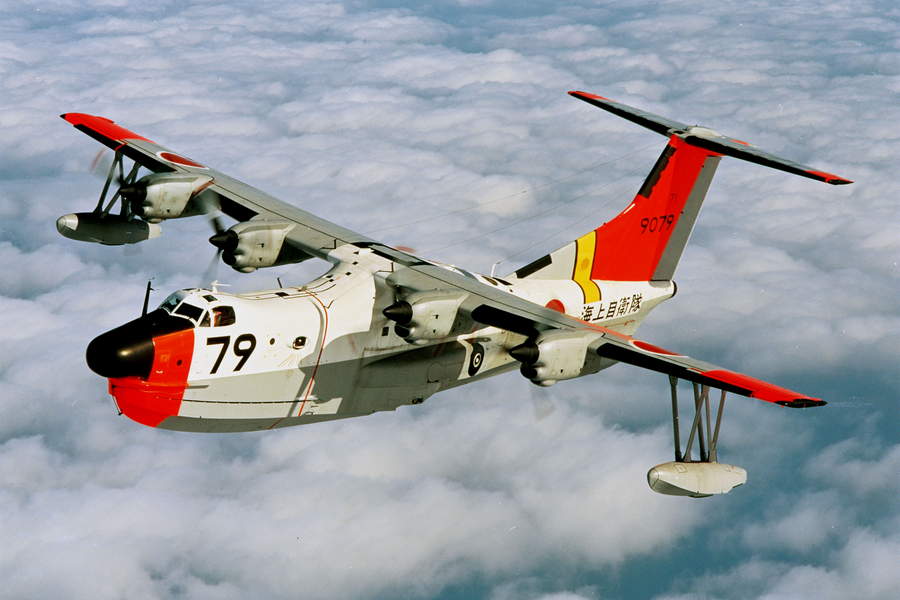
Entering service in 1971, the US-1A has five engines. Four of them are the turboprops that you can see on the wings. But a fifth turboshaft engine (essentially a helicopter engine) is inside the fuselage. During take-off and landing, this engine drives an air generator, that sends compressed air to the upper wing surfaces. This application of the Coandă effect allows the plane to have impressive STOL performance.

Related (?) Applications
It may sound complicated, but the system apparently proved its worth over time. So much so, that the US-1A’s successor, the ShinMaywa US-2, also has a fifth engine, in the same role. The US-2 entered service in 2007. Other aircraft use air from their primary engines, directing it to nozzles over the wing.
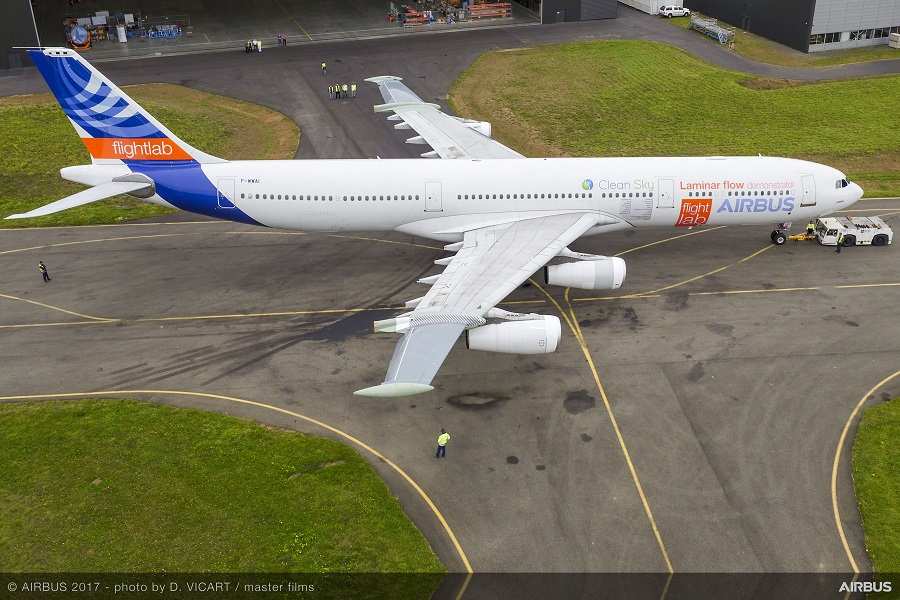
Beyond the Coandă effect, there may be other reasons for directing air through nozzles. Vertical take-off and landing aircraft (e.g. the Harrier) have such nozzles, to permit control at very low speeds. More generally, manipulating the boundary layer of air over the wings can take many forms. In other applications, small holes draw air into the wing, absorbing the turbulent layer, to help achieve laminar flow.
The advent of all-electric aircraft could permit some new boundary layer applications, using distributed propulsion. While this isn’t quite the same as the Coandă effect, the idea there is to simplify the wing, eliminating flaps and/or even ailerons. But it’s not clear if the extra weight of these motors would compensate for weight savings elsewhere on the wing. However, NASA is trying to find out.
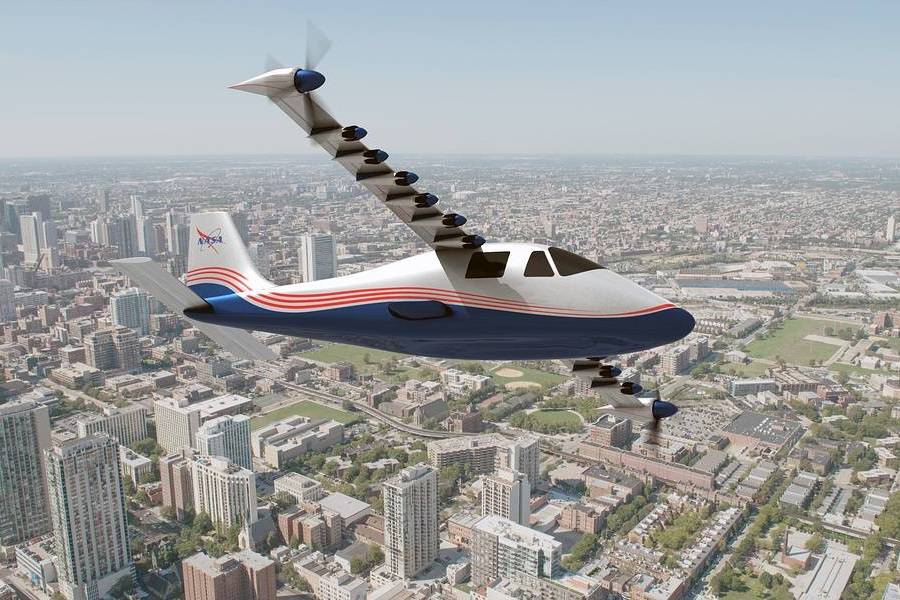
Coming back to the Coandă effect, it has multiple aviation and maritime applications – not all of them positive! But it is a good example of how aircraft designers can customize a design, to fit specific requirements.



